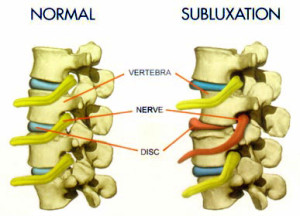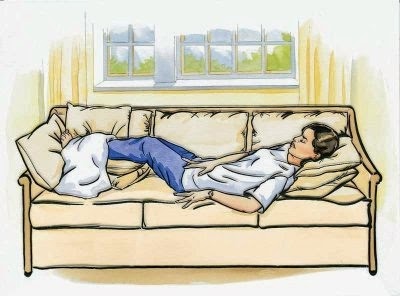

The chiropractors at Back to Health are more than just neck and back doctors: they conduct full body exams to determine where imbalances exist and, when necessary, are able to treat all joints to help resolve conditions. Chiropractic care isn’t just for back pain; it’s for treating any joint that is not functioning or moving properly.
Chiropractic is a complementary health care profession concerned with the diagnosis, treatment, and prevention of neuromusculoskeletal system conditions and the effects of these disorders on general health. In providing an emphasis on manual therapy including joint adjustment and manipulation, chiropractors contribute to a patient’s overall health.
Chiropractic adjustments are so safe that even newborns, children and pregnant patients can receive adjustments to repair the damage caused by the birth process, early childhood trauma, learning to walk, falls, spinal curves, and improper posture while sitting, sleeping, lifting, and sports related injuries.
A Doctor of Chiropractic degree is evidence-based with hands-on training. With over 4,300 hours of study of academic and clinical education, including studies in biological sciences, anatomy, biochemistry, physiology, psychology, neurology, as well as clinical and chiropractic sciences, chiropractors are well equipped to help! Chiropractic is a primary contact health care profession emphasizing differential diagnosis, patient-centred care and research, with expert knowledge in spinal and musculoskeletal health. Doctors of Chiropractic examine and diagnose problems much like Medical Doctors. If a chiropractor is not able to treat your condition, they will refer you to the appropriate health care provider.
Year I & Year II
For the first two years of study, students build a foundation of knowledge, and learn how to integrate this knowledge into clinical cases. In year I, the program begins with the basic sciences (anatomy, biochemistry, biomechanics and radiation biophysics), which inform students about the normal processes in the human body. Applied courses (diagnostic imaging interpretation, health promotion, orthopaedics and clinical diagnosis) are added, integrating learning from the basic sciences and leading students to chiropractic diagnosis. In year II, courses in physiology and pathology are added to the curriculum. These courses provide students with the basic understanding of mechanisms related to health, disease and other neuromuscular conditions, and how these mechanisms present in clinical cases. Throughout these first two years, students learn how to take patient histories, as well as the skills that will form the basis for physical examination and treatment (chiropractic technique). They also learn how to critically appraise research so that, as practitioners, they can make sound judgements about new examination and treatment procedures (applied research and biometrics).
Year III
In year III students are exposed to an increasing amount of case-based material in order to prepare them for the role of student intern (Year IV) in the chiropractic clinic system. The basic sciences from years I and II are integrated into the clinical and diagnostic sciences, laboratory diagnosis, pathology, and clinical nutrition classes. A comprehensive approach to diagnostic imaging ensures students hone their skills in imaging interpretation and diagnosis. Patient management, ethics and jurisprudence, and emergency care further prepare the students for patient encounters in the chiropractic clinic system and for private practice.
Year IV
Students take part in a one-year internship in teaching clinics, on campus and in communities.
There are many different chiropractic techniques that help people reach their optimal health. Many methods complement one another and work best when combined. Each individual is different, and therefore may respond better to one treatment than another. As well, some people have a preference to which technique is used during their treatment. One technique is not better than another; it may merely be more effective in reaching that individual’s specific goals.
The activator method utilizes a hand-held instrument referred to as an activator. This instrument delivers a precise adjustment with consistent velocity. The activator may be used on any joint. However, it is particularly useful in treating the smaller joints of the hands and feet. The activator method is also a good alternative for people who are sensitive to being touched, or for those with osteoporosis or arthritis.
ART is a specific technique that helps diagnose and treat soft tissue (muscle, tendons, fascia, and nerve) injuries. ART is a hands-on approach that incorporates the simultaneous application of tension and stretching of a muscle with patient assistance. This technique helps locate and treat adhesions (scar tissue) in between muscles, as well as between muscles and nerves, that may be limiting range of motion or causing pain and discomfort.
When the 24 bones or vertebrae that protect the spinal cord lose their normal position or motion, this is known as vertebral joint restriction/misalignment/subluxations. These misalignments can cause an irritation to a nerve and a loss of normal function. It can be caused by any stress (physical, emotional, or chemical) that a person cannot adapt to.
In other words: Vertebral Subluxation = Vertebral Misalignment = Vertebral Restriction Subluxations will cause improper nerve impulses going to all muscles, tendons, ligaments, cells, tissues and organs of the body, which can result in loss of motion, stiffness, discomfort, pain and even nerve symptoms!
Subluxations will cause improper nerve impulses going to all muscles, tendons, ligaments, cells, tissues and organs of the body, which can result in loss of motion, stiffness, discomfort, pain and even nerve symptoms!
Chiropractic adjustments are performed to move these vertebrae back into position using specific, controlled force in a precise direction, applied to a joint that is fixated, not moving properly, or subluxated. Adjustments are performed to slowly re-align the vertebrae. Muscles, tendons and ligaments are attached to the vertebrae and often have to be worked on simultaneously to allow the vertebrae to re-align. Chiropractic adjustments help normalize spinal function and avoid bone and soft tissue degeneration. When nervous system function improves, the body can begin the natural healing process.
The “popping” sound that is often associated with an adjustment is called a cavitation. It is the pop that occurs in a spinal joint when vertebral surfaces (facets) are separated to create a vacuum that pulls in nitrogen gas. Contrary to popular belief, it is not your bones rubbing against one another or “cracking.”
Diversified technique is an amalgamation of many different methods. This technique integrates the patient’s detailed history with a thorough biomechanical examination of their nervous and musculoskeletal systems. The treatment protocol may include adjustments, physiotherapeutic modalities, stretches, nutritional supplements, orthotics and other aids.
Pelvic blocks are triangular-shaped devices that are used to relax pelvic ligaments and induce pelvic rotation. These blocks are placed underneath the pelvis while the patient is lying down for a determined amount of time. This procedure will help to reduce any pelvic unlevelling and associated low back pain.
Pelvic drop pieces are sections of the chiropractic table that have the capability of elevating and dropping with the adjustment. This technique allows for increased velocity in the adjustment and greater motion induced into the joint. Pelvic drop pieces help to restore motion in the pelvis and reduce any pelvic unlevelling and associated back pain.
Toggle boards are devices that are used to complement a chiropractic adjustment. The boards are 5.5″ by 8.5″ and are most often used to help induce motion into the joints of the ankles, feet, and knees. The boards are placed under the joint to be adjusted. The device is raised up and then released during an adjustment. This helps to restore a wider range of motion in the joint.
It is entirely possible that you may experience recovery symptoms after your treatment. This is not caused by your chiropractor, or the adjustment. This is the result of your body releasing toxins and finding relief.
If you have had a broken arm, you likely noticed that your arm was stiff once the cast came off. Or, think about the bruised, skinned knees and elbows you’ve had. They’re pretty stiff and sore when they’re healing, aren’t they? And if you had a fever with a cold, you felt stiff then too!
Once in a while, the same sort of uncomfortable things happen when a long-misaligned vertebra is going back into its normal, healthy place and adhesions/scar tissue are being broken up in your muscles, tendons, ligaments and nerves. We call these reactions recovery symptoms and, like any other healing in the making, they are nothing to fear.
They can include headaches, dizziness, soreness of muscle, and tenderness of the spinal joints. The degree of discomfort varies with the individual and the severity of the condition. The recovery symptoms normally occur during the first phase of care, relief care.
As the vertebrae of the spine are being adjusted to a normal position, certain physical changes occur that involve bones, muscles, ligaments, nerves, blood vessels, connective tissue and cartilage. All these tissues and structures must adapt to the new, normal, healthy position. It is understandable then that this structure alignment, which frees trapped nerves, might produce some symptoms of change, especially if one has had many years of debilitating nerve pressure or irritation.
Check out this blog post by Dr. G on what you may experience after your chiropractic adjustment.
If I start seeing a Chiropractor, do I have to keep going forever? No. There are several levels of care that can be addressed through chiropractic. We will discuss your options with you to help you choose which level you wish to have. Many patients do come in for periodic ‘oil change’ visits, and find these visits beneficial. However, if you would prefer to only come in for injury care, please let us know.
What is Active Release Techniques (ART)? Do I need these treatments? One modality that is gaining lots of attention in healthcare and sports injury is ART. When tissues become injured, the body attempts to repair the injury. Unfortunately, the healing process has a tendency to create adhesions, which effectively causes tissues to ‘stick’ to one another, thus impeding the proper smooth function of those and surrounding tissues (which increases the further risk of injury). ART works by eliminating the adhesions, allowing the tissues to function properly. There is occasional discomfort associated with ART, but the results are often quite rapid, allowing patients to return to their usual activities quite quickly. If you require this treatment, it will be recommended by your practitioner.
What are orthotics and why would I need them? A problem with your spine, hips or knees may actually originate from your feet. After all, the feet are the foundation of your body and, just like the foundation of your house, it needs to be solid. After the age of 25, 85% of us will develop pronation (turning inwards) when we walk. Custom orthotics provide the necessary support to the arches of our feet, which have a strong affect on our ankles, knees, hips, and all the way up the back. The results of your foot scan and gait analysis will determine the right orthotics for you.
Should I also be seeing a Registered Massage Therapist? You may benefit from seeing a registered massage therapist. It is especially recommended for those who have very tight musculature that may be inhibiting movement. Additionally, because muscles cross joints and attach to bones, a problem within your spine may be partly caused by a muscle that is too tight and pulling the vertebrae out of place. Massage can alleviate some of this tightness, which in turn will allow your chiropractor to apply more effective adjustments.


